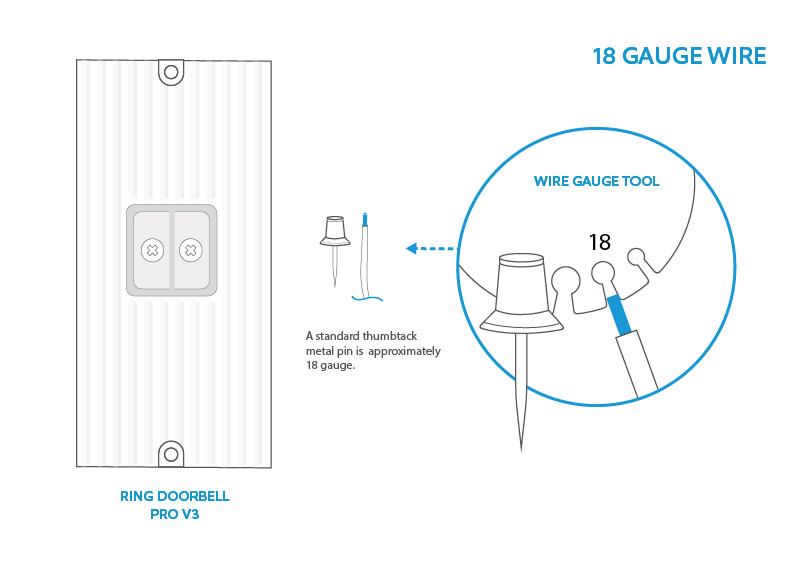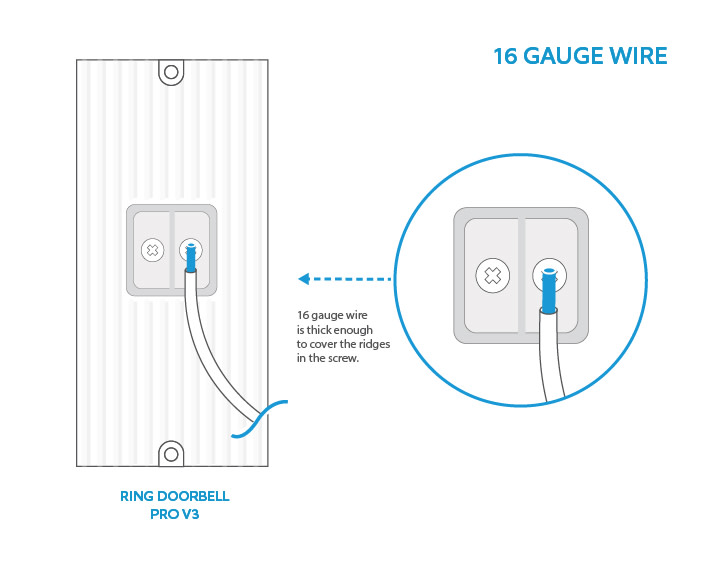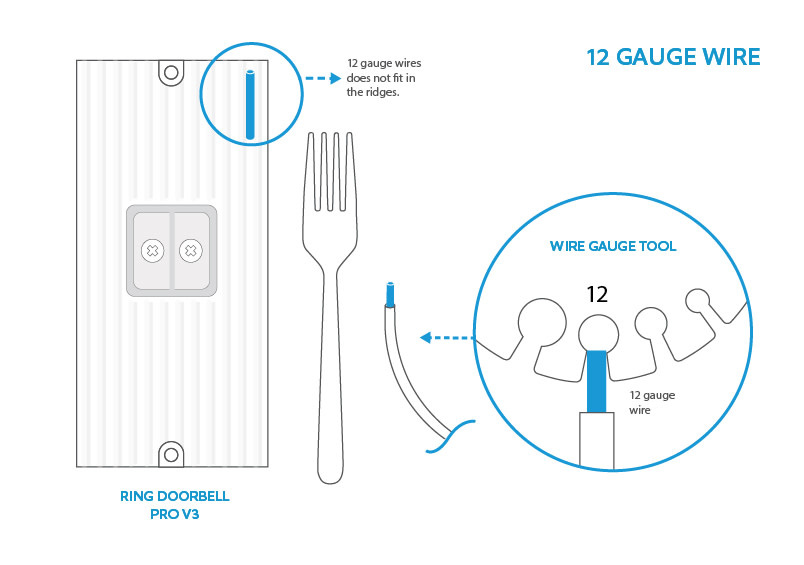Wire Gauges for Ring Wired Doorbell Plus
If you're wiring a Ring Video Doorbell, it's important to use the correct wire gauge. If the wire is too large it can be hard to manipulate and if it's too small may not be adequate to transmit power. This article will give you a quick guide on how to estimate the gauge of a wire and let you know which gauge is best for Wired Doorbell Plus.
Wire Gauge | Wire Comparison |
18-Gauge Wire (Usable) 18-gauge wire is the ideal gauge to use with Ring Video Doorbells. It provides the proper amount of resistance and is very easy to work with and makes wiring simple. To determine whether or not the wire you're using is 18-gauge, get a standard metal thumbtack and compare the pin to the wire. 18-gauge wire is approximately the width of the pin. |  |
16-Gauge Wire (Usable) While not the ideal gauge, you can use a 16-gauge wire with Ring Video Doorbells. It's easy to work with and won't cause much resistance, providing adequate power to the Pro. You can determine whether a wire is 16-gauge by comparing the wire to the terminal screw on the back of your Wired Doorbell Plus. If it's thick enough to cover the ridges on the screw, it's 16 gauge. |  |
20-Gauge Wire (Usable) While also not the ideal gauge for Wired Doorbell Plus, you can use a 20-gauge wire with the unit. It's easy to work with and won't cause much resistance, providing adequate power to the Plus. You can determine if a wire is 20-gauge by comparing the wire to the slots in the terminal screws on the back of the Pro. A 20-gauge should be about the same size. |  |
12-Gauge Wire (Unusable) 12-gauge wire is too thick to work effectively with the Ring Wired Doorbell Plus. It may also not provide enough power to the unit. A 12-gauge can be compared to the tines of a dinner fork. If the wire is the width of one of the tines of the fork, it's 12-gauge. |  |
14-Gauge Wire (Unusable) Like the 12-gauge, a 14-gauge wire is too thick to work effectively with the Ring Wired Doorbell Plus. It may also not provide enough power to the unit. A 14-gauge wire can be compared to an uncooked spaghetti noodle. If the wire is the width of the noodle it's 14-gauge. |  |
22-Gauge Wire (Unusable) A 22-gauge wire is too thin and may not provide all the power that the Ring Wired Doorbell Plus needs. To determine if your wire is 22-gauge, unfold a standard paper clip. If the width is approximately the same as the clip, it's 22-gauge. |  |
24-Gauge Wire (Unusable) If you're down to a 24-gauge wire, you'll find it's inadequate for wiring and powering a Wired Doorbell Plus. If you have wire this thin, you may be able to use a plug-in adapter offered on Ring.com. A 24-gauge wire can be compared to a bobby pin. If the wire is the same width as the thin side as the pin, it's 24-gauge. |  |
Last updated 1 month ago
